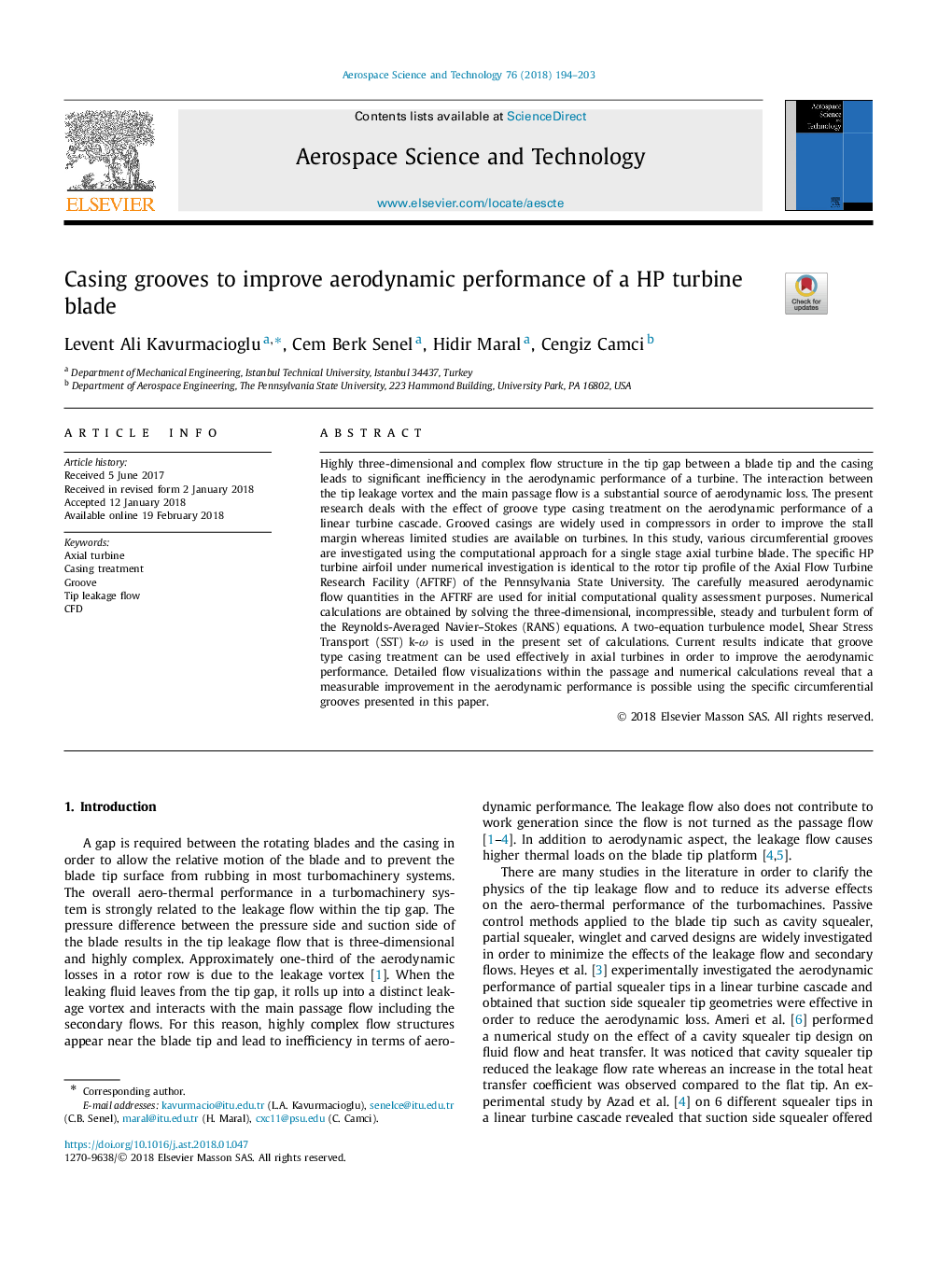| Article ID | Journal | Published Year | Pages | File Type |
|---|---|---|---|---|
| 8057846 | Aerospace Science and Technology | 2018 | 10 Pages |
Abstract
Highly three-dimensional and complex flow structure in the tip gap between a blade tip and the casing leads to significant inefficiency in the aerodynamic performance of a turbine. The interaction between the tip leakage vortex and the main passage flow is a substantial source of aerodynamic loss. The present research deals with the effect of groove type casing treatment on the aerodynamic performance of a linear turbine cascade. Grooved casings are widely used in compressors in order to improve the stall margin whereas limited studies are available on turbines. In this study, various circumferential grooves are investigated using the computational approach for a single stage axial turbine blade. The specific HP turbine airfoil under numerical investigation is identical to the rotor tip profile of the Axial Flow Turbine Research Facility (AFTRF) of the Pennsylvania State University. The carefully measured aerodynamic flow quantities in the AFTRF are used for initial computational quality assessment purposes. Numerical calculations are obtained by solving the three-dimensional, incompressible, steady and turbulent form of the Reynolds-Averaged Navier-Stokes (RANS) equations. A two-equation turbulence model, Shear Stress Transport (SST) k-Ï is used in the present set of calculations. Current results indicate that groove type casing treatment can be used effectively in axial turbines in order to improve the aerodynamic performance. Detailed flow visualizations within the passage and numerical calculations reveal that a measurable improvement in the aerodynamic performance is possible using the specific circumferential grooves presented in this paper.
Related Topics
Physical Sciences and Engineering
Engineering
Aerospace Engineering
Authors
Levent Ali Kavurmacioglu, Cem Berk Senel, Hidir Maral, Cengiz Camci,
